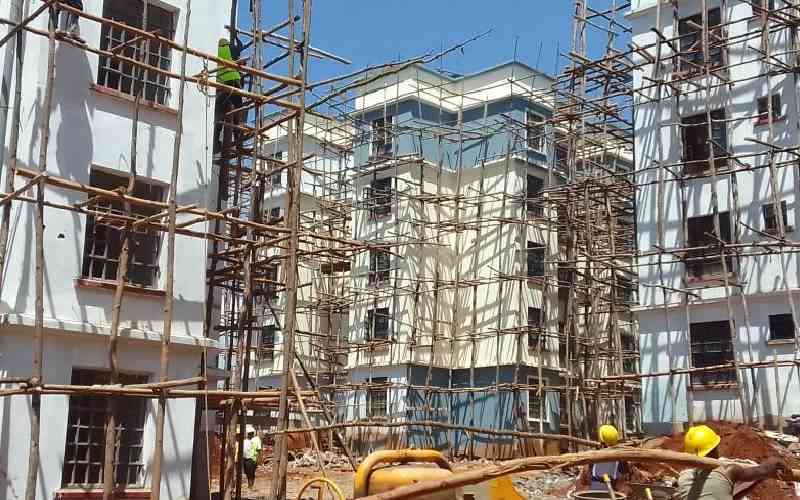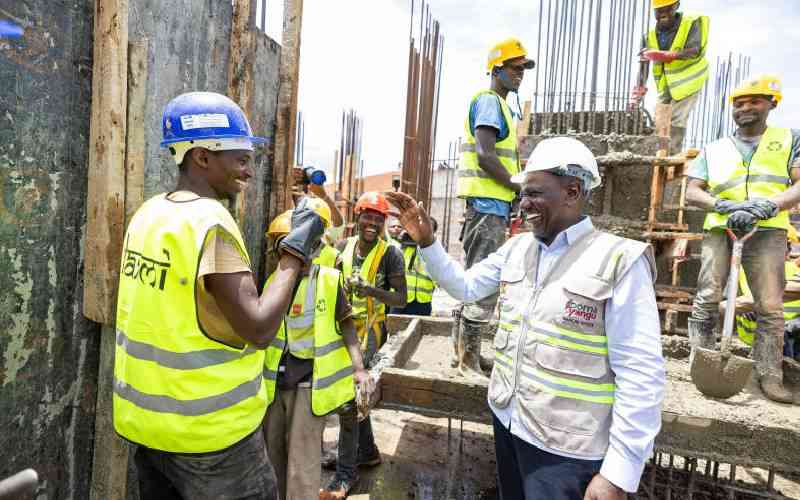
The recent Supreme Court decision in which it refused to declare the Housing Levy unconstitutional has raised a storm, not so much from the substance of the decision, but on the direction the court gave on public participation.
Most commentators on the judgment seem to believe that the court had been retrogressive and had backpedalled on progressive guidelines previously established by the High Court thereby limiting the obligations of legislatures at national and county levels, on public participation.
I have read and reread the Supreme Court judgement and must state that anyone who looks at the decision objectively and does not start from the position that the court “has been bought” or is “controlled by UDA” will arrive at a different conclusion.
Contrary to what has been argued by its interlocutors, the court did not backpedal on the requirements for public participation. The court instead restated what the High Court declared on numerous occasions; public participation is an essential component of law-making and must be meaningful and not tokenistic.
The court went to great lengths to define the manner in which representative and participatory democracy should be integrated. It argued that on the one hand, Article 1 affirms the concept of delegated sovereignty, through which Parliament makes laws on behalf of the citizens, but also recognises the place of direct exercise of sovereignty, which demands that the people be involved in the decision-making process.
The court emphasized the right of citizens to participate in governance and reiterated that decisions should be rooted in public reasoning and deliberation, an approach which enhances legitimacy and ensures that the government remains responsive to its people. The court specifically held that public participation is necessary even in respect of Bills amended after public participation, arguing that it would be against the spirit of the Constitution to sneak in fresh substantive propositions after public participation and fail to subject such new proposals to public deliberation.
Where the court departs from the position taken by the petitioners is whether such return to the public is necessary where the fresh proposals in the amended Bill arise from the views of the public in the initial participation processes. To its credit, the court reviewed each single amendment in the Bill and concluded that most were substantive amendments, and would, as a general principle, need to be resubmitted back to the people for deliberation.
However, in the instant case, the court found that each of the substantive proposals in the amended Bill had emanated from the public participation process. In the court’s views it would be “circuitous and not amount to prudent use of public resources” to expect Parliament to subject input from the public participation exercise to a fresh round of public participation. This argument makes rational sense, though knowing Kenya, it is open to abuse.
The other issue the court had also been requested to determine was whether the failure by Parliament to explain why it had rejected each of the public’s proposals fatally compromised the process. The court’s determination was that while it was necessary for Parliament to explain to the public why it had rejected their propositions, it was not necessary to respond to every proposition singly but could do so thematically, which in this case had been done.
Considering that the views of the public sometimes run into thousands and revolve around similar points, this appears quite pragmatic and reasonable. In making these determinations, the court emphasized the need not to convert constitutional values and principles like those in Article 10, including public participation, into normative prescriptions.
In the court’s view, such values and principles were “inherently open-textured”, providing direction without prescribing exact steps to be taken by duty-bearers. Courts should therefore be wary of being overly prescriptive as long as the spirit of the Constitution is complied with. The adequacy of public participation was therefore context-determined and duty-bearers were permitted, in designing public participation processes, to take into account subjective considerations, including, like in the case of the Finance Bill, the Bill’s constitutional and statutory timelines.
Overall, the court provided reasonable, constitutionally sound, but pragmatic guidance on the issue of public participation which though essential, must never become an unduly expensive and impossible millstone on the legislative process.
The writer is an advocate of the High Court.
Stay informed. Subscribe to our newsletter
 The Standard Group Plc is a
multi-media organization with investments in media platforms spanning newspaper
print operations, television, radio broadcasting, digital and online services. The
Standard Group is recognized as a leading multi-media house in Kenya with a key
influence in matters of national and international interest.
The Standard Group Plc is a
multi-media organization with investments in media platforms spanning newspaper
print operations, television, radio broadcasting, digital and online services. The
Standard Group is recognized as a leading multi-media house in Kenya with a key
influence in matters of national and international interest.
 The Standard Group Plc is a
multi-media organization with investments in media platforms spanning newspaper
print operations, television, radio broadcasting, digital and online services. The
Standard Group is recognized as a leading multi-media house in Kenya with a key
influence in matters of national and international interest.
The Standard Group Plc is a
multi-media organization with investments in media platforms spanning newspaper
print operations, television, radio broadcasting, digital and online services. The
Standard Group is recognized as a leading multi-media house in Kenya with a key
influence in matters of national and international interest.















